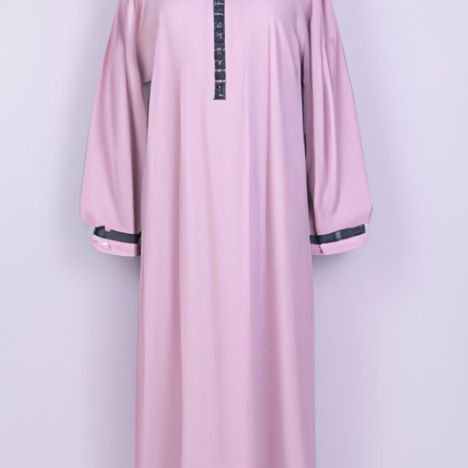Table of Contents
Styling Tips for Wearing Abayas in Different Occasions
Abayas are traditional garments worn by women in many Islamic cultures. They are typically loose-fitting, full-length robes that cover the entire body, often worn over other clothing. Abayas come in a variety of styles, colors, and fabrics, making them versatile pieces that can be worn for different occasions. Whether you’re attending a formal event, going to work, or simply running errands, there are styling tips that can help you look your best in your abaya.
For formal occasions such as weddings or parties, opt for a more embellished abaya with intricate embroidery or beading. Choose a Fabric like silk or satin for a more luxurious look. Pair your abaya with elegant Accessories such as statement Jewelry and a clutch bag to complete your outfit. Keep your hair and makeup simple and elegant to complement the overall look.
If you’re wearing an abaya to work, choose a more tailored style in a neutral color such as black, navy, or grey. Look for abayas with structured silhouettes and clean lines for a professional look. Pair your abaya with closed-toe shoes and a structured handbag to complete your office-appropriate outfit. Keep your accessories minimal and opt for a sleek hairstyle to maintain a polished appearance.
For casual outings or running errands, opt for a more relaxed and comfortable abaya in a breathable fabric such as cotton or linen. Choose a style with a looser fit and a more casual design, such as a simple button-Down or wrap style. Pair your abaya with comfortable shoes such as Flats or Sandals and a crossbody bag for convenience. Keep your accessories minimal and opt for a natural makeup look for a laid-back vibe.
When styling your abaya, consider the occasion and dress code to ensure that you look appropriate and feel confident. Pay attention to the fit and length of your abaya to ensure that it flatters your body shape and is comfortable to wear. Experiment with different styles, colors, and fabrics to find the perfect abaya for each occasion.

Remember that confidence is key when wearing an abaya, so wear it with pride and carry yourself with grace and poise. Embrace the cultural significance of the abaya and wear it with respect for its traditions. By following these styling tips, you can look stylish and elegant in your abaya for any occasion.
The History and Cultural Significance of Abayas in Islamic Fashion
The abaya is a traditional garment worn by women in many Islamic cultures. It is a long, flowing robe that covers the entire body, often worn over other clothing. The abaya is typically black in color, although it can also be found in a variety of other colors and styles. This garment is an important part of Islamic fashion and has a long history and cultural significance.
The origins of the abaya can be traced back to the Arabian Peninsula, where it was worn by both men and women as a form of protection from the harsh desert climate. Over time, the abaya evolved into a garment specifically for women, with different styles and designs emerging in various Islamic cultures.
In many Islamic countries, the abaya is seen as a symbol of modesty and piety. It is worn by women to cover their bodies and protect their modesty in accordance with Islamic teachings. The abaya is also a form of cultural expression, with different regions and countries having their own unique styles and designs.
One of the most common styles of abaya is the Arabic cotton abaya. This garment is made from lightweight Cotton Fabric, making it comfortable to wear in hot climates. The full Sleeves and square collar of the Arabic cotton abaya provide full coverage, while the loose fit allows for ease of movement. This style of abaya is popular in many Middle Eastern countries, where it is worn for both everyday wear and special occasions.
Another popular style of abaya is the Turkish robe caftan. This garment is inspired by traditional Turkish clothing and features intricate embroidery and embellishments. The Turkish robe caftan is often made from luxurious fabrics such as silk or satin, making it a popular choice for formal events and celebrations.
In Morocco, the jilbab is a traditional form of abaya that is worn by women for religious and cultural reasons. The jilbab is typically made from heavy fabric and features a loose, flowing silhouette. This style of abaya is often worn with a headscarf or hijab to complete the modest look.
The abaya is not only a garment of religious significance but also a symbol of cultural identity. In many Islamic cultures, the abaya is passed down from generation to generation, with each garment telling a story of tradition and heritage. The intricate designs and embellishments found on many abayas reflect the rich artistic traditions of Islamic culture.
Overall, the abaya is a garment that holds deep cultural and religious significance in Islamic fashion. It is a symbol of modesty, piety, and cultural identity, worn by women in many Islamic countries as a form of expression and tradition. Whether it is the Arabic cotton abaya, the Turkish robe caftan, or the Moroccan jilbab, each style of abaya tells a unique story of Islamic fashion and heritage.

